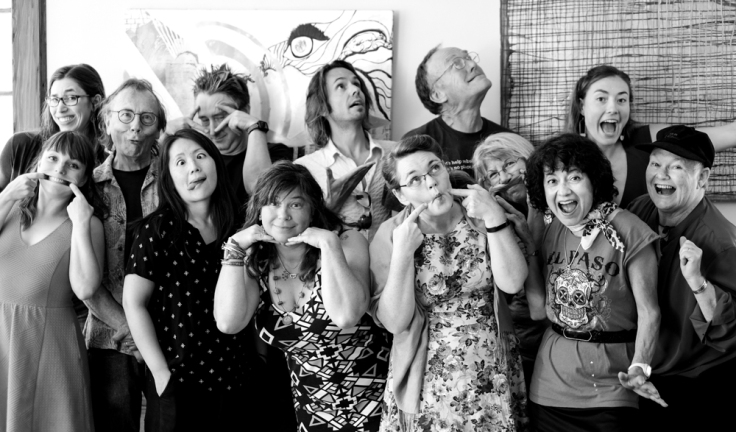
Want some rhythm? Want to add the sound of taiko drums to your painting? Or, do you want your audience to walk the backstreets of Venice as a path to your photo?
Use a QR code.
Don’t know how? I am going to teach you!
The idea of using a QR (‘quick response’) code is one that can make your art piece multi-media and interactive. QR codes have been used in galleries and museums. QR Codes in Museums.
A QR code is a machine readable code, kind of like the UPC barcode on your products at the store. With a QR code app on your smart phone (iPhone or android), you can scan QR codes to open designated Internet links (e.g. Website, Wikipedia, Youtube, etc.).
Here’s an example of a QR code for Wikipedia. 
Scanning this code will take you to Wikipedia’s main page.
As artists, we can create QR codes to provide the viewer with links to:
- an audio and video tour
- music to go with the art
- information on how the piece was made
- background on the historical influences on the piece.
You can even design your own QR codes as a piece of art. Artistic & Creative QR Codes.


Where does this QR code take you?
Don’t know how to use QR Codes? Check out “How to use QR on your iPhone or iPad” to get help on using the QR code. Very simple, easy read.
In short, how to scan a QR code and read or listen to it on your smart phone or iPad?
- Download a free app. There are lots of them. I use this QR Reader app with my iPhone. Very, very easy to use.
- Now, you should be able to scan the QR code above. Where did the code take you?
- How to make a QR code for your own use? Also, very simple. I went to “How to Make a QR Code in 4 Quick Steps.”
- I ‘generated’ a QR code in a few minutes.
IDEAS: QR Codes in Museums
- The Smithsonian Natural History Museum used QR codes in an exhibition on Neanderthals. QR codes sent users to a site where that can upload a photo, see what they would have looked like 30,000 years ago, and share via Facebook and email.
- The Smithsonian also had a Scouting exhibit. The Smithsonian created a scavenger hunt, giving the audience clues to the next code. The quest could include an activity or a game for the viewer to do.
- The Virginia Museum of Fine Arts, allowed “you to view virtual objects in real space. They have set up areas in multiple cities across the East Coast and in 33 Richmond Starbucks to act as virtual museums. Places like vacant lots or the streets of SoHo, have been transformed into art galleries using QR codes that launch the AR app (using Layar) that “places” the art “on the wall” of your smartphone. Now people in New York, Philadelphia and Washington, D.C. get to enjoy this exhibition as they walk down the streets of their city.”



March 29, 2015 at 8:41 am
I’ve got my app ready. Love the idea of engaging the artist and inviting them to participate.
LikeLiked by 1 person
March 29, 2015 at 9:26 am
So, where did the QR code take you?
LikeLike